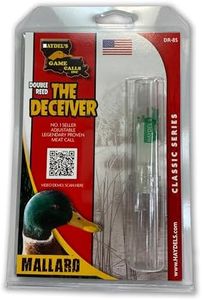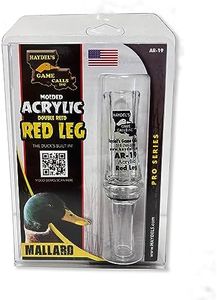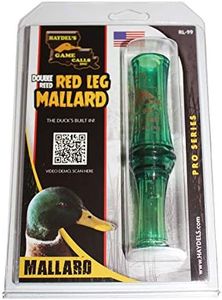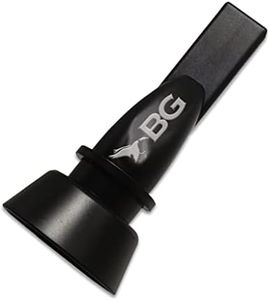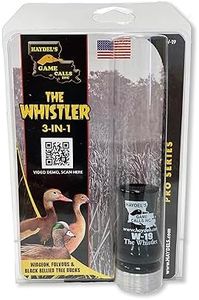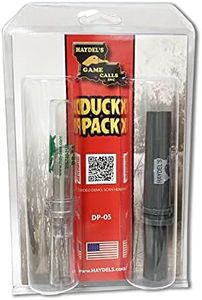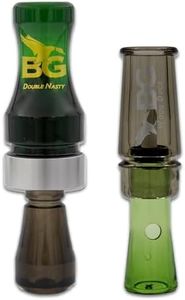We Use CookiesWe use cookies to enhance the security, performance,
functionality and for analytical and promotional activities. By continuing to browse this site you
are agreeing to our privacy policy
10 Best Duck Calls
From leading brands and best sellers available on the web.Buying Guide for the Best Duck Calls
Choosing a duck call might seem overwhelming because there are many styles and features available, but understanding what makes each type unique can make the process much simpler. The right duck call will help you mimic the sounds of ducks, improving your hunting success and enjoyment. Start by thinking about how and where you plan to hunt—such as what kinds of ducks you target, the size of the grounds, and your own experience level. It's important to try the calls if possible, listen to sound samples, and consider what feels comfortable and effective in your hands. Focus on the fundamental characteristics so you can pick a call that matches your needs and helps you get the results you want.MaterialDuck calls are most commonly made of acrylic, wood, or polycarbonate. This refers to the body of the call and impacts the sound it produces and its durability. Acrylic calls are known for producing loud, sharp sounds and are great for open water or windy conditions. Wood calls tend to create softer, more natural tones that are good for close-range calling or hunting in timber. Polycarbonate calls fall in between, offering durability and decent sound quality at a middle ground. To choose the right material, think about where you will use the call most often: go for acrylic in big, open areas, wood if you're in dense cover or want a traditional sound, and polycarbonate for general use or if you're just starting out.
Reed TypeThe reed inside the duck call is what produces the sound, and the most common options are single reed and double reed. Single reed calls can make a wider range of sounds and can be louder, but they require more skill to use well. Double reed calls are easier to use and control, producing softer, raspier sounds which can sound more natural to ducks, especially for beginners. If you're new to calling, a double reed may give you better results right away. If you like to experiment with different sounds or want to call louder, a single reed could be a better choice as you gain experience.
Call Style (Short Reed vs. Traditional)Duck calls come in different styles, mainly short reed and traditional (often called Louisiana style). Short reed calls are compact and can make a variety of sounds but may require more technique to operate, making them suitable for hunters who want versatility and are willing to practice. Traditional calls have a classic design and may be easier for some people to learn, but often produce a more limited range of sounds. If you're starting out or want something straightforward, traditional style might be easier to use, while short reed calls are ideal if you want to produce more types of duck sounds.
Sound VolumeVolume refers to how loud the call can get, which is especially important depending on where and how you hunt. Loud calls are great for attracting ducks at a distance or in windy, open spaces, but they can be too much for smaller, quiet environments where subtlety is needed. Softer calls are best for close-in hunting, timber environments, or when ducks are wary. Choose higher-volume calls if you'll be hunting wide bodies of water, and lower-volume calls for smaller ponds or thick cover where you want to avoid spooking the birds.
Ease of UseThis refers to how easy it is to blow and get a realistic duck sound from the call. Some calls are designed to be very user-friendly and require less air or skill to operate, making them good choices for beginners or those who want reliable, simple calls. Complex calls that need more precise air control or technique are better for experienced callers who want to create a wide range of sounds. Think about your skill level and how much time you want to spend practicing—pick a simpler call if you want immediate results, and a more complex one if you enjoy practicing and improving your calling skills.
